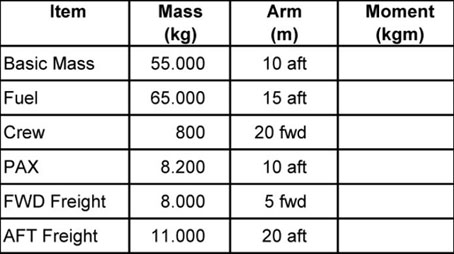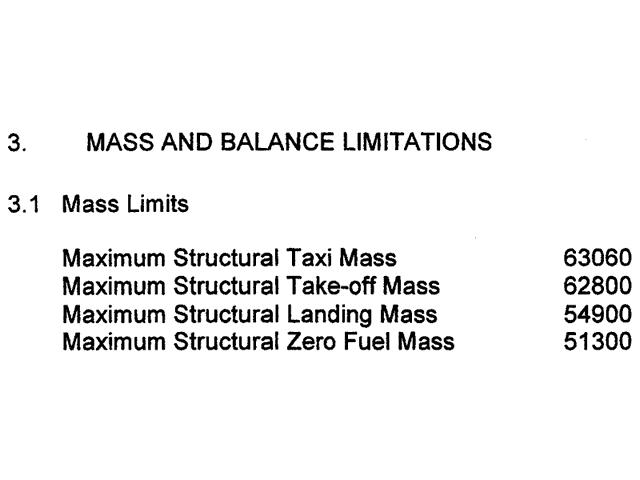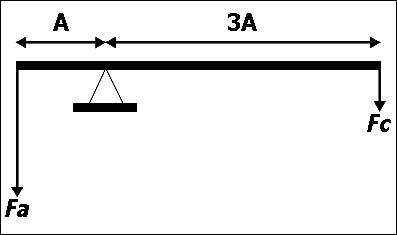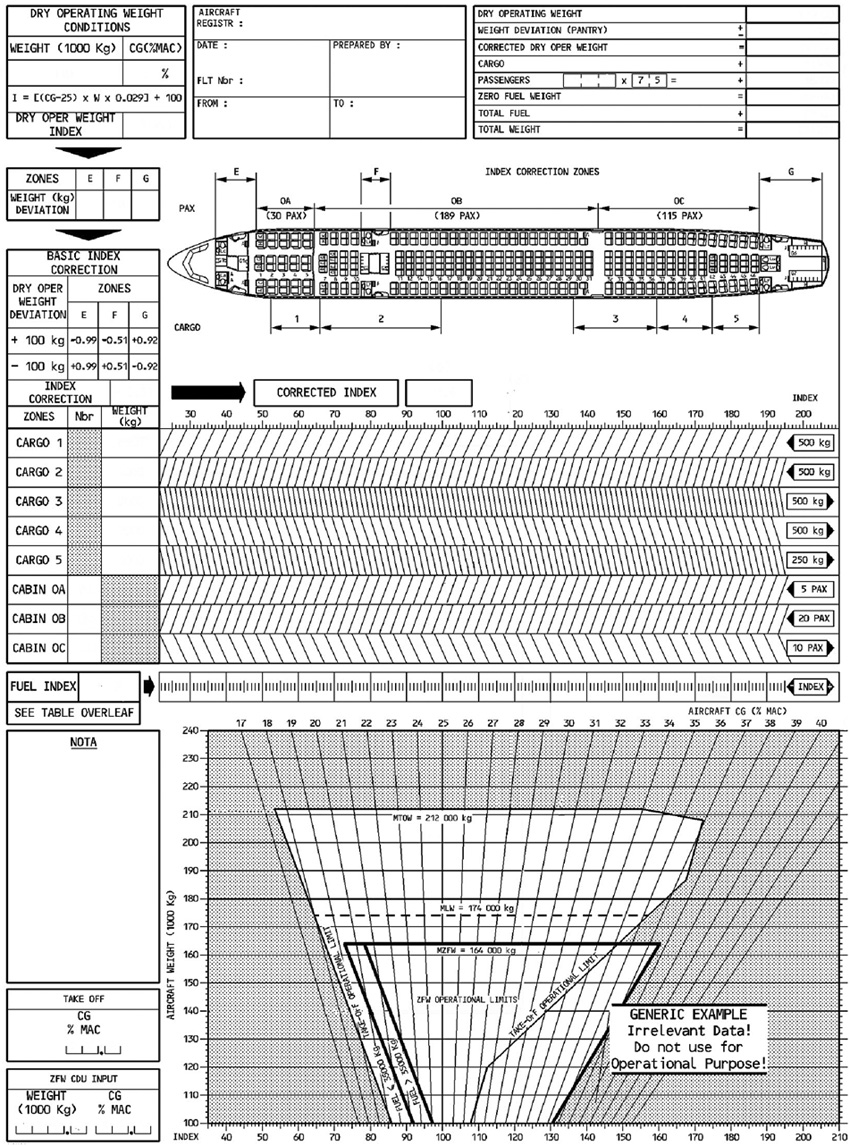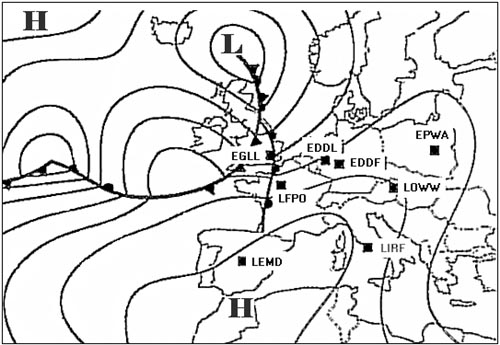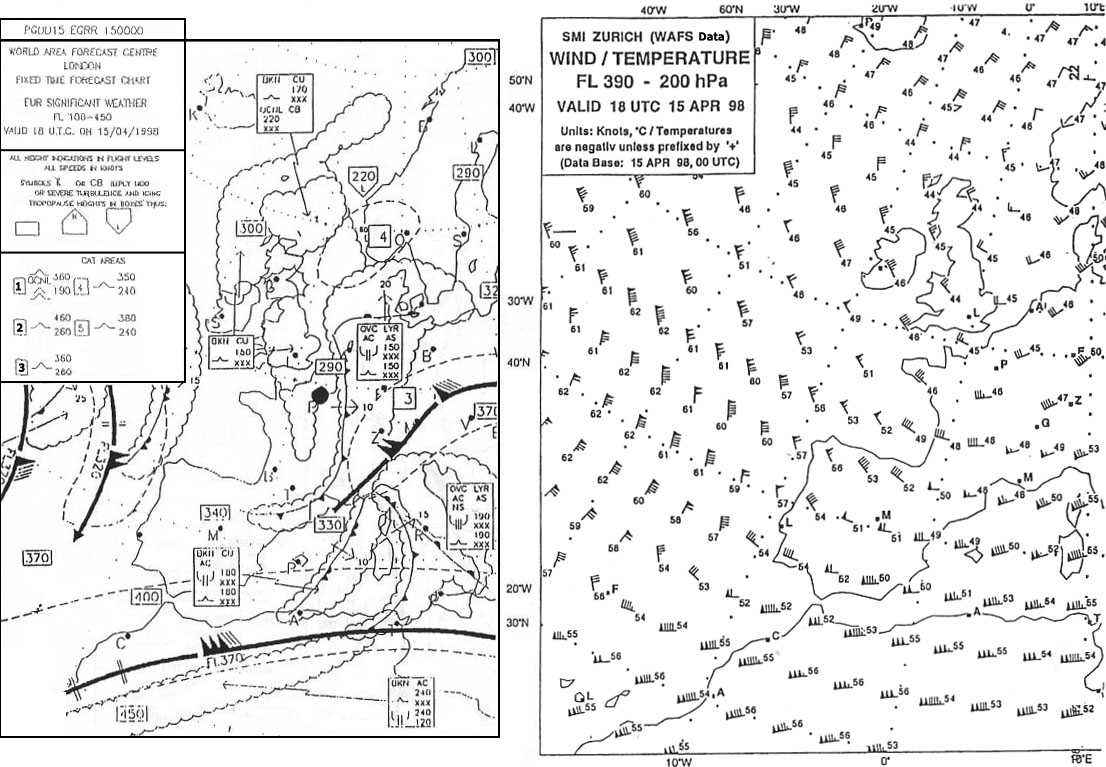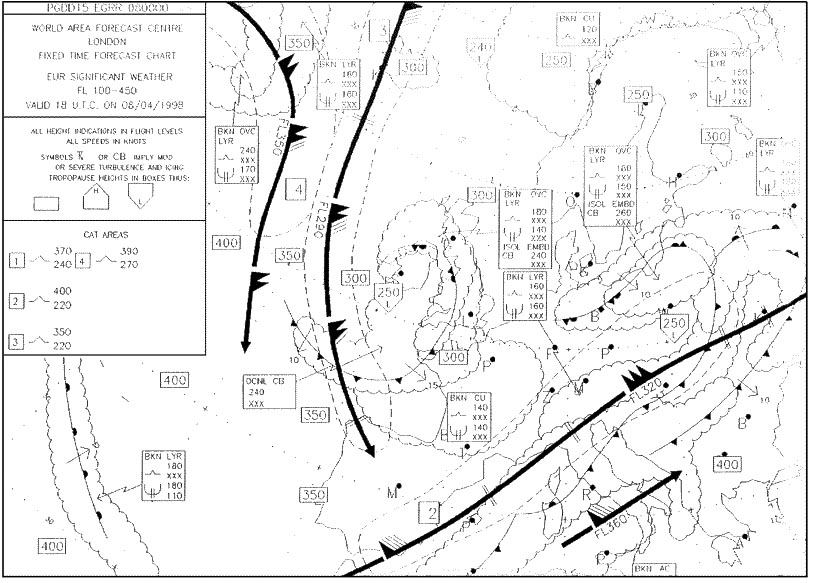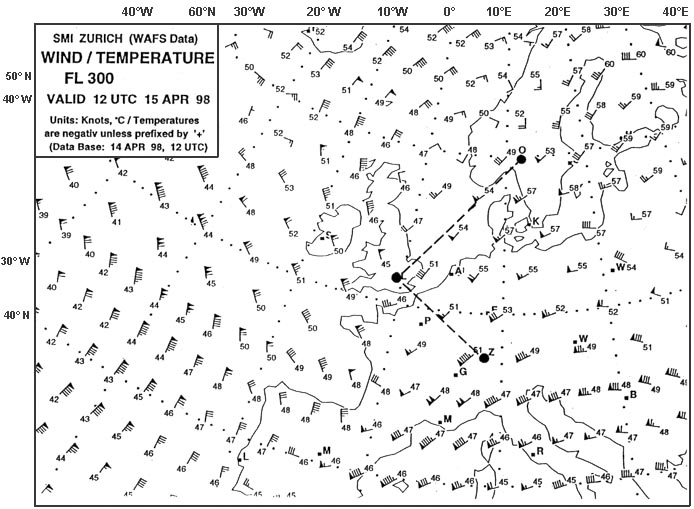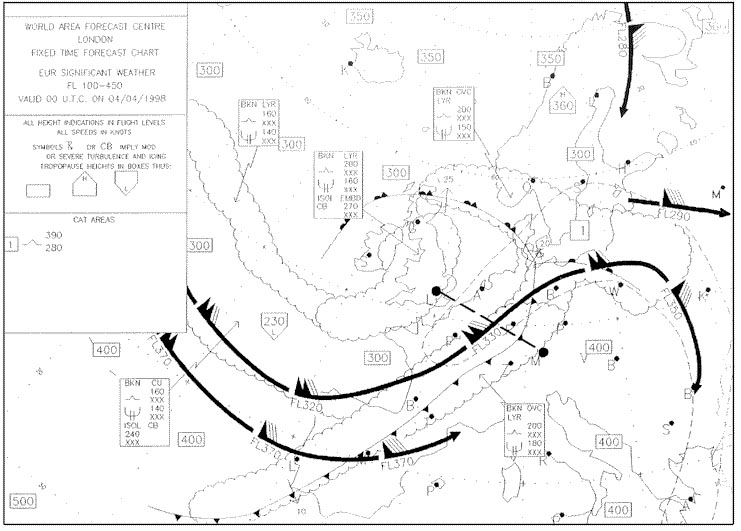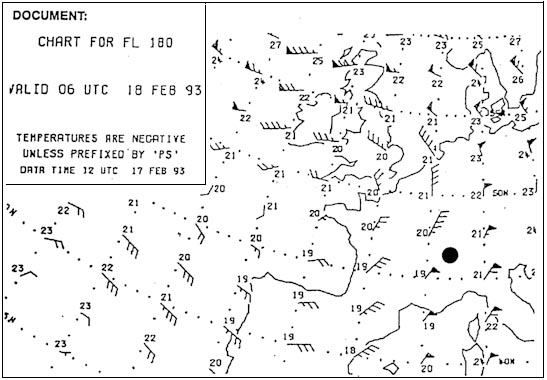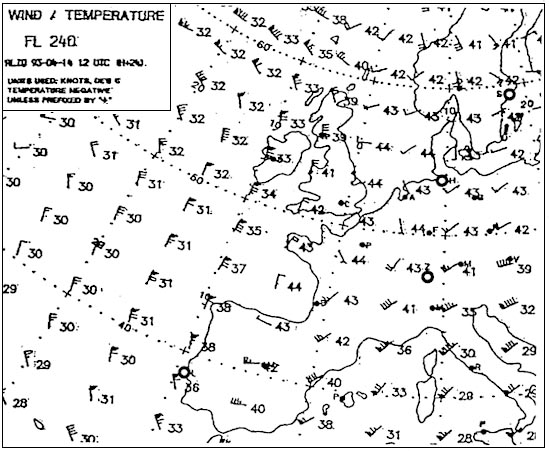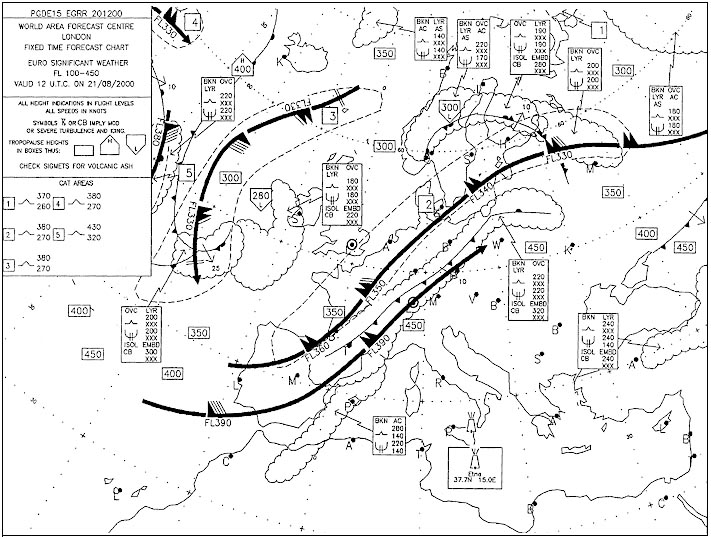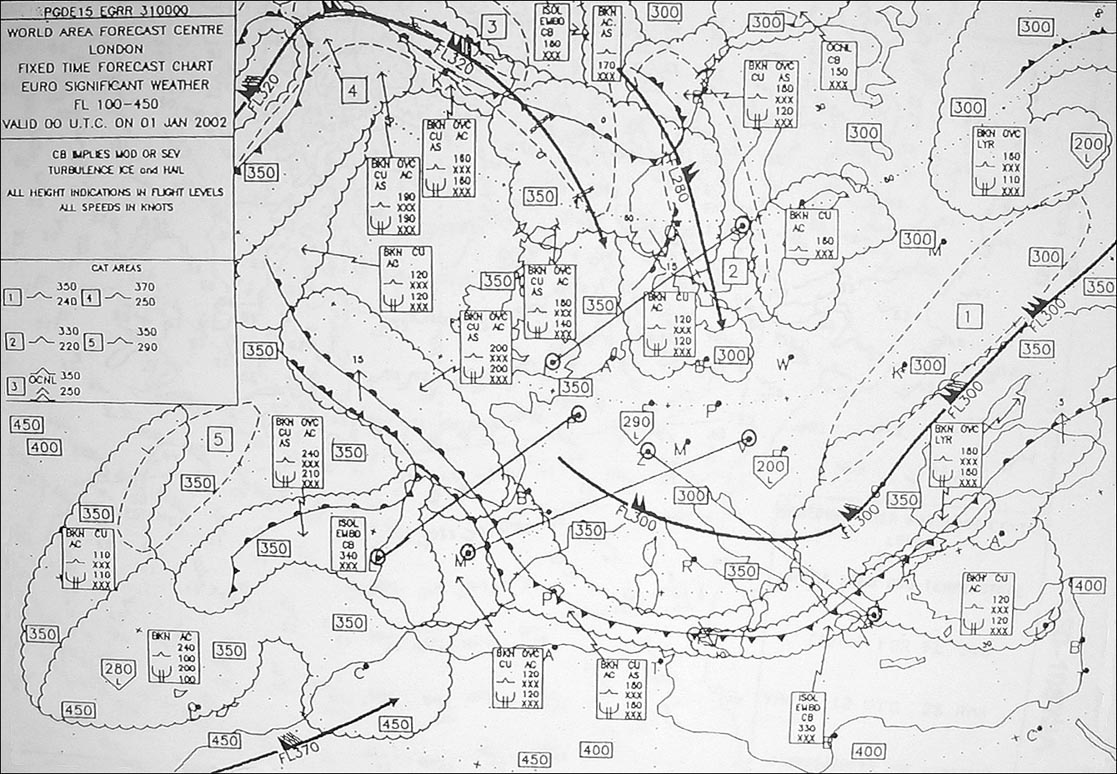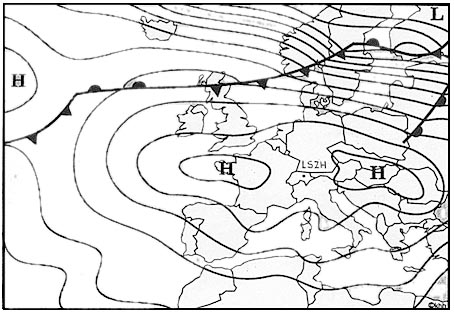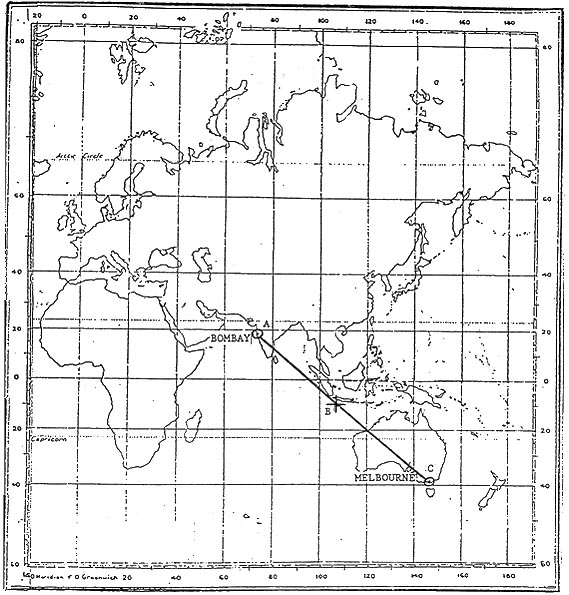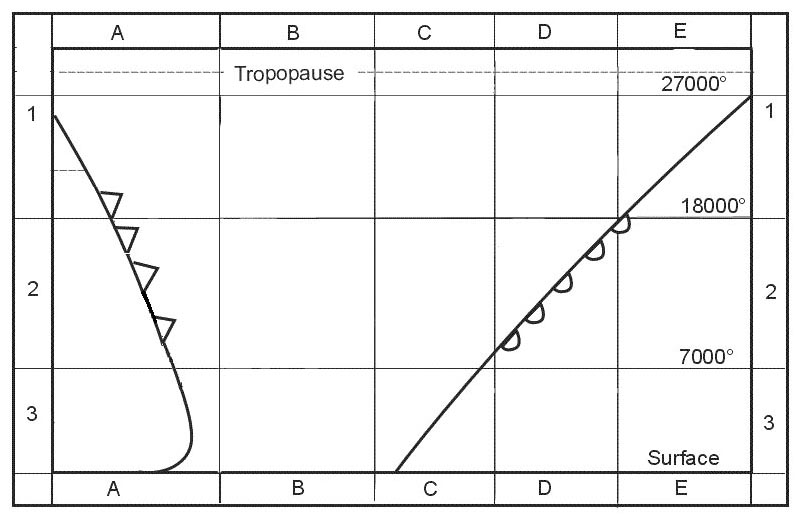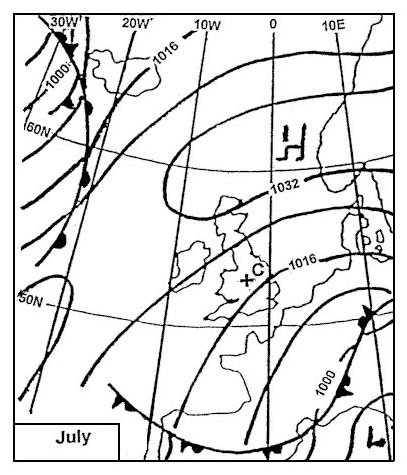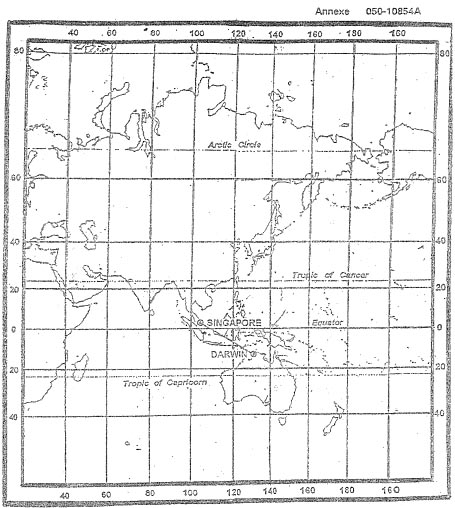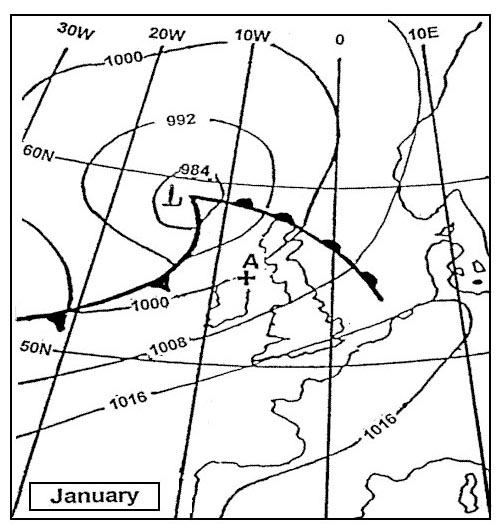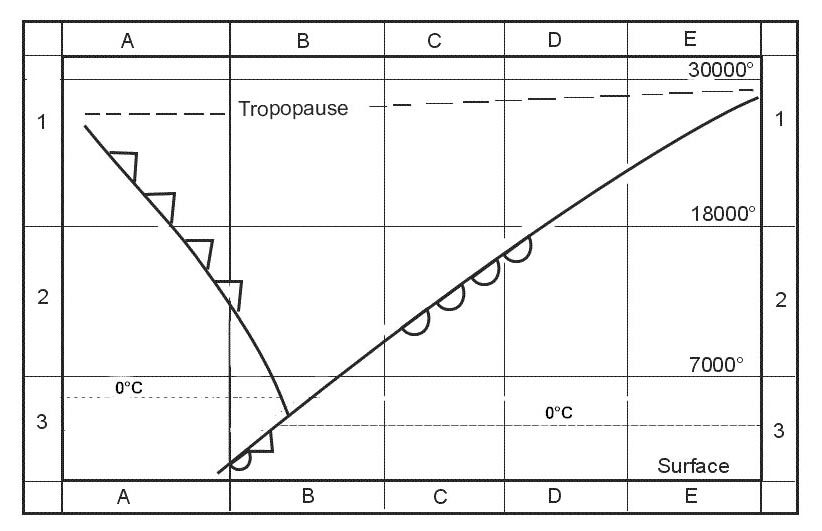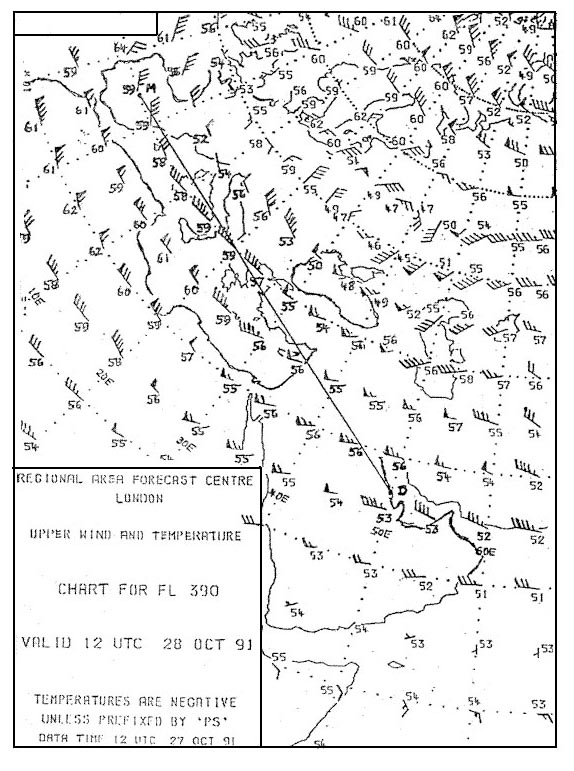Question 105-1 : Excluding rvsm an appropriate flight level for ifr flight in accordance with semi circular height rules on a course of 180° m is ? [ Exam pilot ]
Question 105-2 : Given .distance from departure to destination 400 nm.safe endurance 2 5 h.tas 115 kt.ground speed out 130 kt.ground speed home 105 kt.what is the distance of the psr from the departure point ?
145 nm
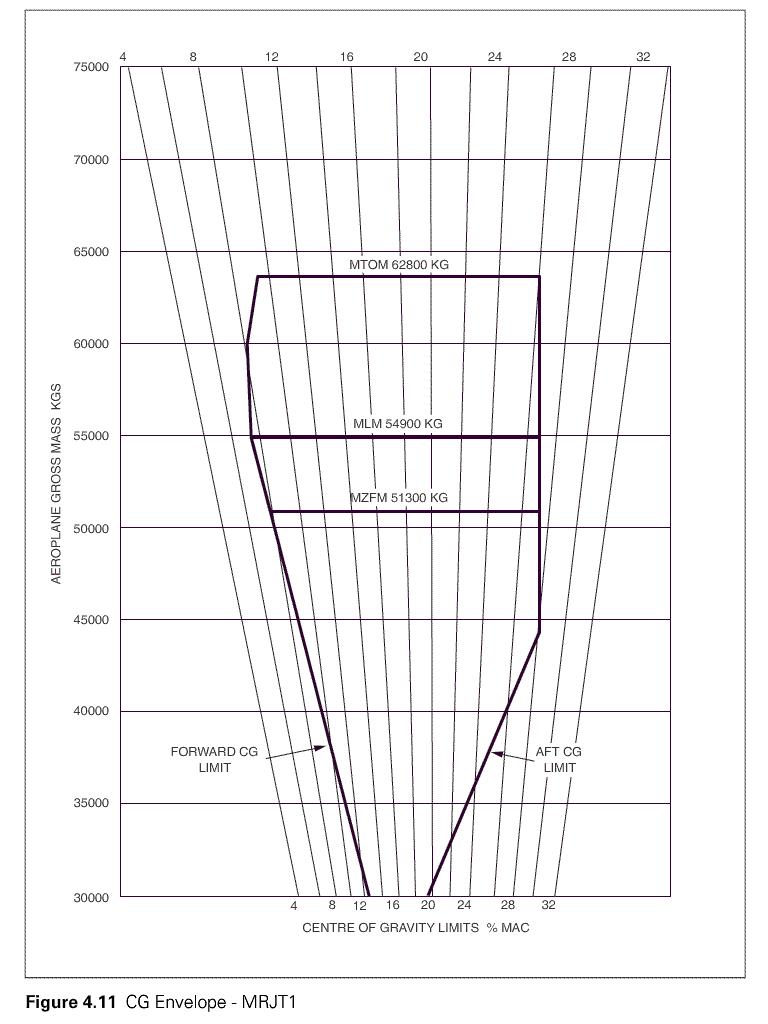
Question 105-3 : Given .distance from departure to destination 300 nm.safe endurance 4 h.tas 110 kt.ground speed out 120 kt.ground speed home 100 kt.what is the distance of the psr from the departure point ?
218 nm
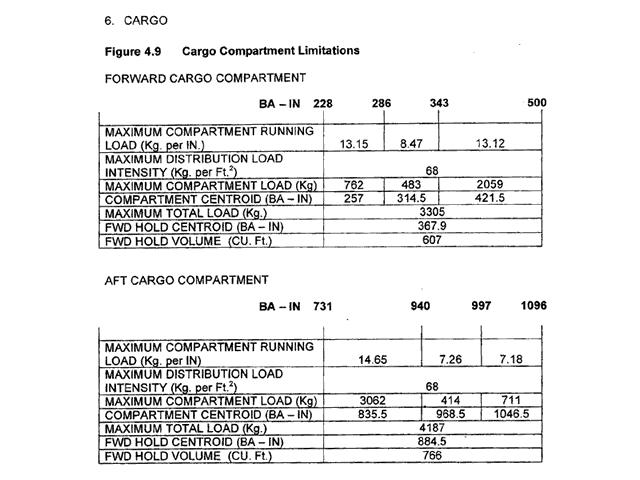
Question 105-4 : What is the mean temperature deviation °c from the isa over 50°n 010°w . err a 033 83 ?
Question 105-5 : Given .distance from departure to destination 4630 nm.safe endurance 12 4 h.true track 240.w/v 060/80.tas 530 kt.what is the distance of the psr from the departure point ?
3211 nm
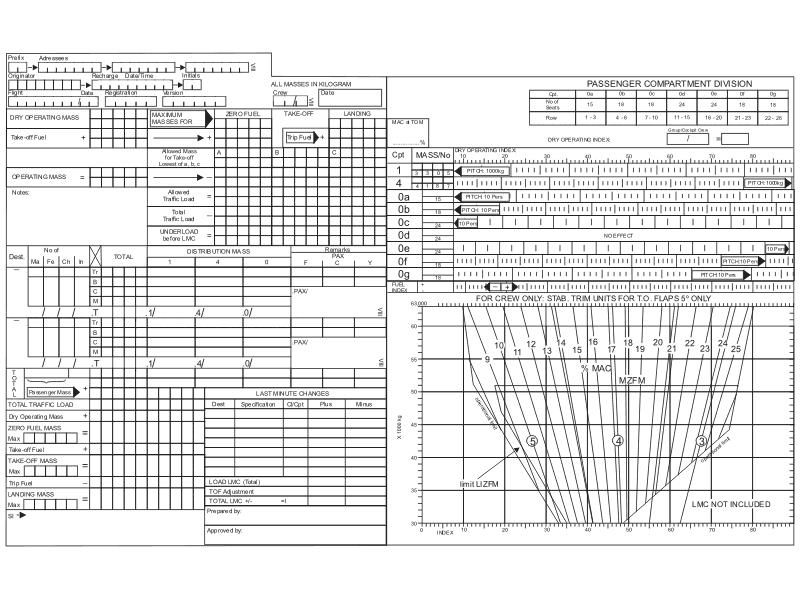
Question 105-6 : Given .distance from departure to destination 1100 nm.true track 280°.w/v 100/80.tas 440 kt.what is the distance time of the pet from the departure point ?
Distance 450 nm time 52 min
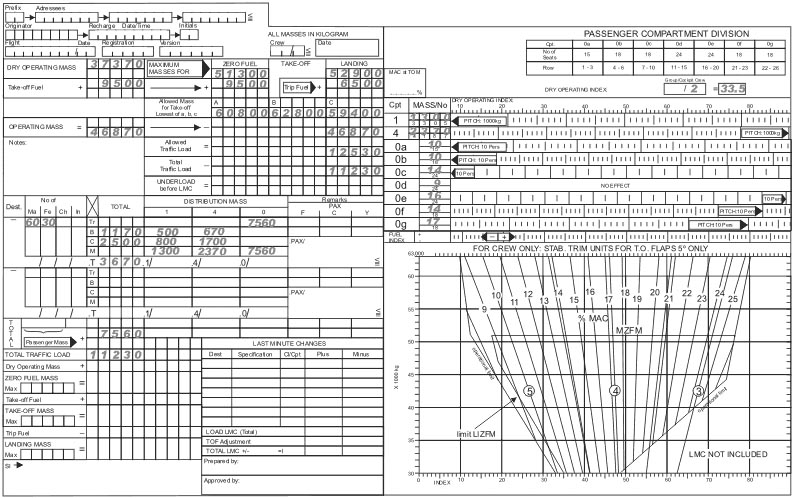
Question 105-7 : Given .distance from departure to destination 150 nm.safe endurance 3 2 h.tas 90 kt.ground speed out 100 kt.ground speed home 80 kt.what is the distance and time of the psr from the departure point ?
Distance 142 nm time 85 min
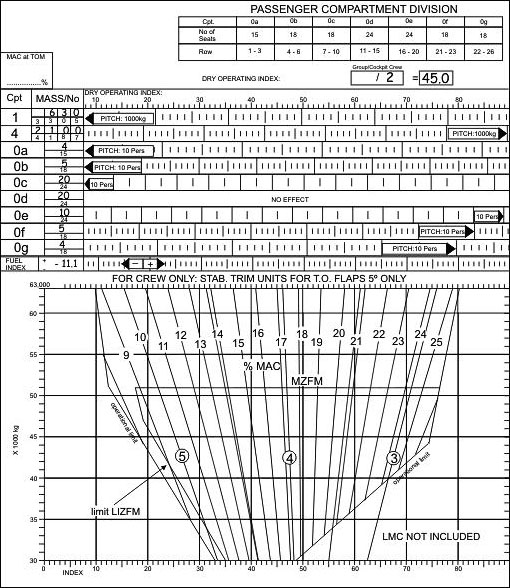
Question 105-8 : Given .distance from departure to destination 270 nm.true track 030.w/v 120/35.tas 125 kt.what is the distance and time of the pet from the departure point ?
Distance 135 nm time 68 min
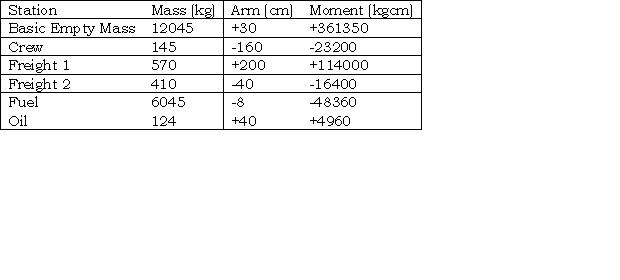
Question 105-9 : At reference or see flight planning manual sep 1 figure 2 5 .given .fl 75.lean mixture and full throttle 2300 rpm.take off fuel 444 lbs.take off from msl .find .endurance in hours and minutes . err a 033 100 ?
Question 105-10 : From which of the following would you expect to find facilitation information regarding customs and health formalities ?
Aip
Question 105-11 : An aircraft flies at a tas of 380 kt it flies from a to b and back to a distance ab = 480 nm .when going from a to b it experiences a headwind component = 60 kt the wind remains constant .the duration of the flight will be ?
Question 105-12 : Given .distance from departure to destination 350 nm.true track 320.w/v 350/30.tas 130 kt.what is the distance and time of the pet from the departure point ?
Distance 210 nm time 121 min
Question 105-13 : Given .distance from departure to destination 250 nm.gs out 130 kt.gs home 100 kt.what is the distance of the pet from the departure point ?
Question 105-14 : Given .distance from departure to destination 550 nm.endurance 3 6 h.true track 200.w/v 220/15.tas 130 kt.what is the distance of the psr from the departure point ?
231 nm
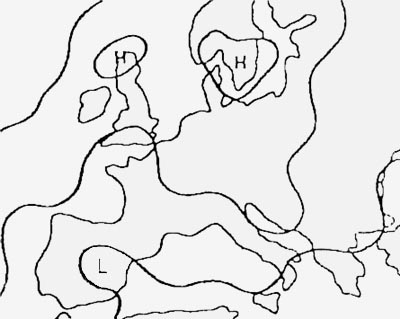
Question 105-15 : Given .distance from departure to destination 180 nm.endurance 2 h.tas 120 kt.ground speed out 135 kt.ground speed home 105 kt.what is the distance and time of the psr from the departure point ?
Distance 118 nm time 53 min
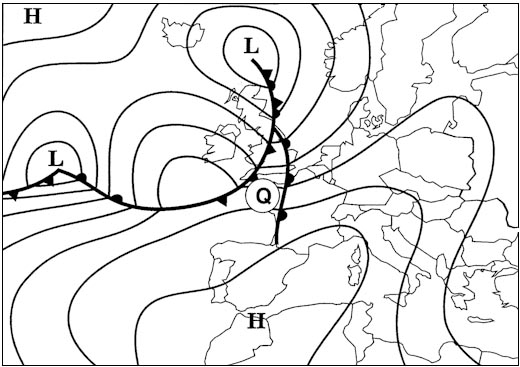
Question 105-16 : Given .distance from departure to destination 2500 nm.gs out 540 kt.gs home 470 kt.what is the time of the pet from the departure point ?
Question 105-17 : Given .distance from departure to destination 875 nm.true track 240 .wind 060/50 kt.tas 500 kt.what is the distance and time of the pet from the departure point ?
Question 105-18 : The forecast period covered by the paris/charles de gaulle tafs totals hours . err a 033 122 ?
Question 105-19 : If cas is 190 kts.altitude 9000 ft.temp isa 10°c.true course tc 350°.w/v 320/40.distance from departure to destination is 350 nm.endurance 3 hours.and actual time of departure is 1105 utc .the point of equal time pet is reached at ?
1213 utc
Question 105-20 : At reference or see flight planning manual mrjt 1 figure 4 4.planning a flight from paris charles de gaulle to london heathrow for a twin jet aeroplane.preplanning .dry operating mass dom 34 000 kg.traffic load 13 000 kg .the holding is planned at 1 500 ft above alternate elevation the alternate ?
48 125 kg
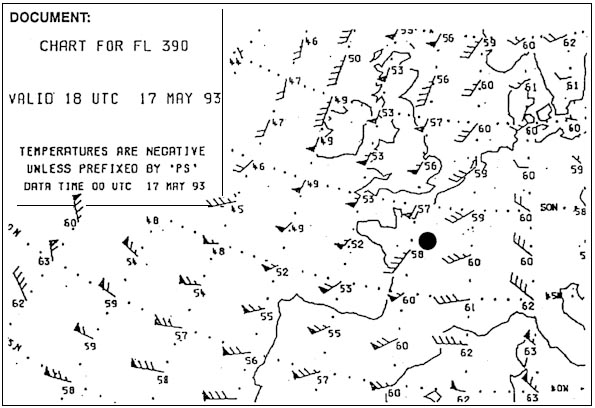
Question 105-21 : Given .distance from departure to destination 1385 nm .gs out 480 kt .gs home 360 kt .what is the time of the pet from the departure point ?
Question 105-22 : Given .distance from departure to destination 256 nm .gs out 160 kt .gs home 110 kt .what is the distance of the pet from the departure point ?
Question 105-23 : Given .distance from departure to destination 480 nm.safe endurance 5 h.true track 315°.w/v 100/20.tas 115 kt.what is the distance of the psr from the departure point ?
280 nm
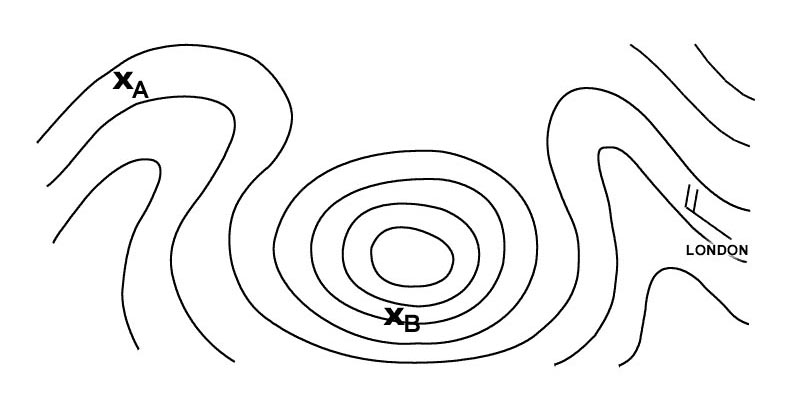
Question 105-24 : Given .distance from departure to destination 150 nm .true track 142° .wind 200°/15kt .tas 132 kt .what is the distance of the pet from the departure point ?
79 nm

Question 105-25 : A metar reads .1430z 35002kt 7000 skc 21/03 q1024 =.which of the following information is contained in this metar ?
Question 105-26 : The wind °/kt at 40°n 020°w is . err a 033 157 ?
Question 105-27 : Given .maximum allowable take off mass 64 400 kg.maximum landing mass 56200 kg.maximum zero fuel mass 53 000 kg.dry operating mass 35 500 kg.estimated load 14 500 kg.estimated trip fuel 4 900 kg.minimum take off fuel 7 400 kg .find maximum additional load ?
Question 105-28 : What mean temperature °c is likely on a course of 360° t from 40°n to 50°n at 040°e . err a 033 167 ?
Question 105-29 : For flight planning purposes the landing mass at alternate is taken as ?
Zero fuel mass plus final reserve fuel and contingency fuel
Question 105-30 : Given .distance from departure to destination 220 nm.true track 175°.wind 220/10 kt.tas 135 kt.what is the distance of the pet from the departure point ?
116 nm
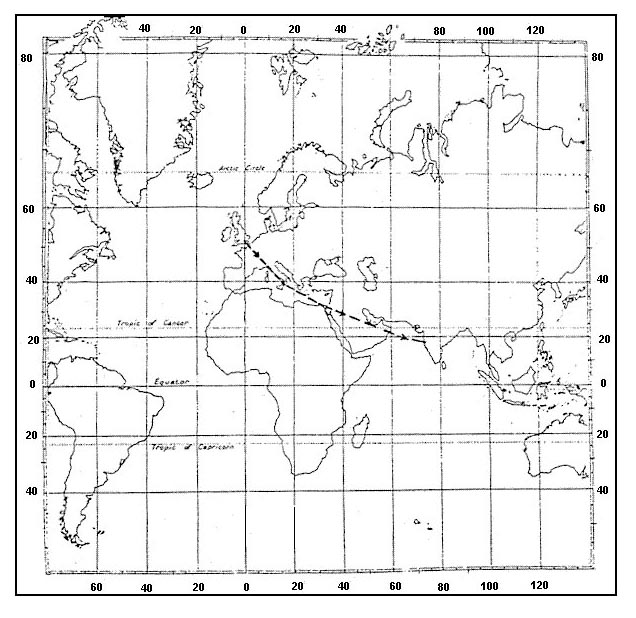
Question 105-31 : At references or see flight planning manual mrjt 1 figure 4 2 and figure 4 5 3 2. given .estimated take off mass 57000 kg.ground distance 150 nm.temperature isa 10°c.cruise at 74 mach.find cruise altitude and expected true air speed . err a 033 178 ?
Question 105-32 : Given .distance from departure to destination 950 nm.gs out 275 kt .gs home 225 kt.what is the time of the pet from the departure point ?
Question 105-33 : Given .distance from departure to destination 950 nm .safe endurance 3 5 h .tas 360 kt .ground speed out 320 kt .ground speed home 400 kt .what is the distance and time of the psr from the departure point ?
Question 105-34 : Given .distance from departure to destination 1000 nm .safe endurance 4 h .tas 500 kt .ground speed out 550 kt .ground speed home 450 kt .what is the distance of the psr from the departure point ?
990 nm
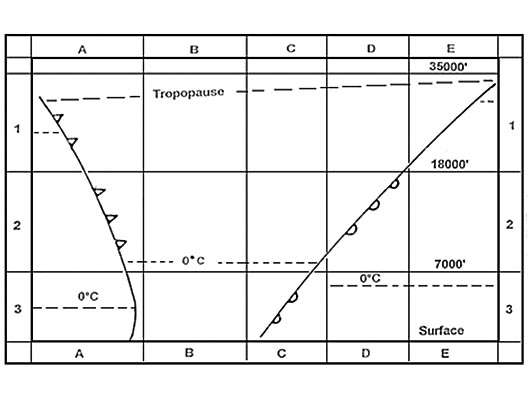
Question 105-35 : Given .distance from departure to destination 2200 nm.true track 150° .wind 330°/50 kt.tas 460 kt.what is the distance and time of the pet from the departure point ?
Distance 980 nm time 115 min
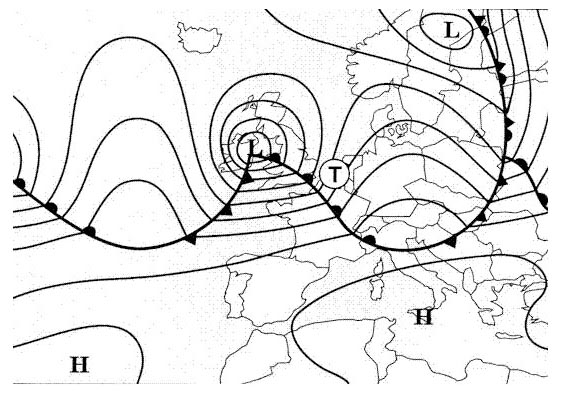
Question 105-36 : Route manual chart nap.the initial true course from a 64°n006°e to c 62°n020°w is . err a 033 202 ?
271°
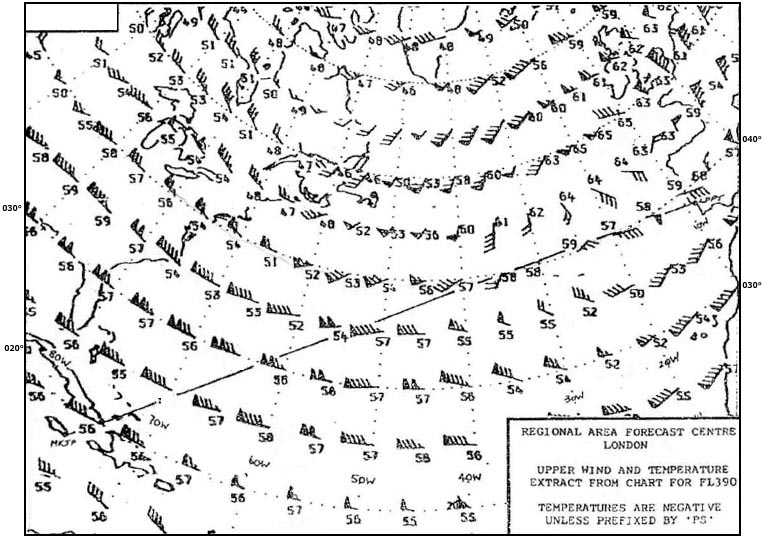
Question 105-37 : Which best describes the maximum intensity of icing if any at fl160 in the vicinity of berlin 53° n013°e . err a 033 204 ?
Question 105-38 : At reference or see flight planning manual sep 1 figure 2 1. given . fl 75.oat +5°c.during climb average head wind component 20 kt .take off from msl with the initial mass of 3650 lbs .find still air distance nam and ground distance nm using the graph 'time fuel distance to climb' . err a 033 212 ?
Question 105-39 : Given .distance from departure to destination 285 nm .true track 348°.wind 280°/25 kt.tas 128 kt.what is the distance of the pet from the departure point ?
Question 105-40 : Given .distance from departure to destination 435 nm .gs out 110 kt .gs home 130 kt .what is the distance of the pet from the departure point ?
~
Exclusive rights reserved. Reproduction prohibited under penalty of prosecution.
4159 Free Training Exam

